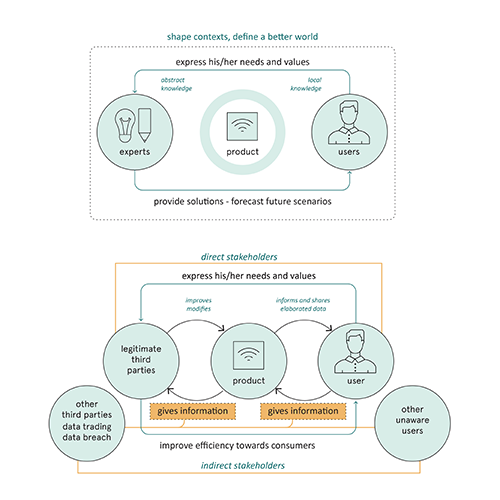Ethics of technology and design ethics in socio-technical systems
Investigating the role of the designer
DOI:
https://doi.org/10.7577/formakademisk.2201Sammendrag
This paper addresses many of the issues deriving from both design activity itself and the introduction of technology into everyday life. Relevant authors like Papanek (1984), Thackara (2005) and Manzini (2006) warned about the risks of design activity, as well as the consequences of bringing products to the world. Papanek defined design as the second most harmful profession one can practice, while Thackara claims that design is the cause of many troubling situations in our world (Mink, 2016). Manzini advocates the imminent need for a paradigm shift towards both a more sustainable design and way of living. In , Papanek pointed out that designers have a social and moral responsibility for the consequences of their innovations (Mink, 2016). For this reason, first we cannot ignore the advice, but also, we genuinely believe that designers should include ethical principles in their education. This paper seeks to address design ethics focusing on socio-technical systems and the new challenges introduced by both the Internet of things and artificial intelligence. The methodological framework combines the developed in human computer interaction () and computer ethics with a methodology based on need, requirements and performances developed in architecture. This approach is applied to the development of connected appliances, to conduct our reflections on an applied case study. Some guidelines are drawn at the end of this paper to guide designers in achieving a greater understanding of the ethical implications involved in the design process, establishing the responsibilities and limits of the designer.

Nedlastinger
Publisert
Hvordan referere
Utgave
Seksjon
Lisens
- Forfatteren(e) beholder sin opphavs- og kopieringsrett til eget manuskript, men gir tidsskriftet varig rett til 1) å fremføre manuskriptet for offentligheten i den opprinnelig publiserte digitale form, og 2) å registreres og siteres som første publisering av manuskriptet.
- Forfatteren må selv forvalte sine økonomiske kopieringsrettigheter overfor eventuell tredjepart.
- Tidsskriftet gir ingen økonomisk eller annen kompensasjon for innsendte bidrag, medmindre det er gjort særskilt avtale om dette med forfatteren(e).
- Tidsskriftet plikter å arkivere manuskriptet (inklusive metadata) i den opprinnelig publiserte digitale form, i minst ett dertil egnet åpent tilgjengelig langtidsarkiv for digitalt materiell, som for eksempel i de norske universitetenes institusjonsarkiv innen rammen av NORA-samarbeidet.
Verket vil bli publisert OpenAccess med en Creative Commons 4.0-lisens som tillater alle å lese, dele og tilpasse innholdet, også kommersielt, under lisensvilkårene:
Dette verket må tilskrives/ krediteres på riktig måte, en lenke må gis til CC-BY 4.0-lisensen, og endringer som er gjort må angis på en rimelig måte, men ikke på noen måte som antyder at lisensgiveren støtter deg eller din bruk.



